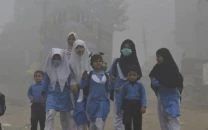Nourishing South Asia's future: one child at a time
South Asia alone is home to about one-third of the world's 148 million children affected by stunting.

Children are our future, yet their future is at risk. Worldwide, particularly in South Asia, children face high rates of stunting that prevent them from achieving their full potential, leading to lower educational achievement, decreased economic productivity and diminished earning potential. Stunting is a condition when a child has a low height-for-age ratio, primarily due to chronic malnutrition during the first 1,000 days of their life.
South Asia alone is home to about one-third of the world's 148 million children affected by stunting. This presents a significant barrier to human capital development: a child who does not receive adequate nutrition during their early years may lose 10 per cent of their lifetime income, perpetuating cycles of poverty and inequality. Further, a child born today in South Asia is expected to achieve only 48 per cent of their full productive potential, leading to a 9 per cent annual loss of GDP in the region. Stunting is one of the major factors contributing to this missed opportunity for growth and prosperity.
Addressing stunting and childhood malnutrition is a paramount priority, especially if South Asia wants to achieve its development goals. So, how can we reverse this trend and ensure a healthy future for the youngest members of our human family?
First, some positive news: since 2000, stunting in South Asian countries has dropped by nearly 36 per cent, creating better opportunities for millions of children. For the past 15 years, the World Bank has supported significant efforts to reduce stunting and address its root causes. However, progress is happening too slowly and unevenly across the region.
For example, Nepal and Bangladesh have each reduced their stunting rates by half, whereas Pakistan's stunting rate has remained stagnant over the past two decades. India's stunting rates have declined moderately, albeit with significant variation across states with some, like Kerala, making significant progress thanks to the implementation of innovative child health strategies.
A focus on combating stunting across South Asia needs to learn from these successes and adopt a multi-sectoral approach.
Toward a Multi-sectoral Approach
Stunting is a complex issue that cannot be solved by a single solution. Its causes are intricate and multi-sectoral, deeply rooted in social, economic and environmental factors, leading to a series of negative impacts throughout a person's life.
For example, counseling on appropriate maternal and child dietary intake cannot achieve its intended outcome unless nutritious foods are accessible and affordable to the public. Maternal malnutrition is prevalent in South Asia, highlighting that many women are deprived of the essential nutritional care they need. Additionally, there is a significant link between gender inequities and persistent malnutrition among women and children in the region.
Mothers who are malnourished because of limited access to high-quality food or gender norms that prioritise their family's needs before their own are more likely to have infants who are also malnourished, which perpetuates stunting.
Moreover, improved nutrition on its own is often not enough to prevent stunting, as frequent gastrointestinal infections impede nutrient absorption. Combating stunting thus requires parallel improvements in water, sanitation and hygiene (WASH). A high fertility rate also significantly contributes to intergenerational transmission of child stunting, calling for investments in women's education and better access to family planning.
Setting Ambitious Targets to Catalyse Action and Mobilise Partnerships
Recognising the importance of a multi-sectoral approach, Pakistan's recent Country Partnership Framework with the World Bank outlines a bold, decade-long collaboration to tackle childhood stunting as one of six key challenges to put the country on a sustainable growth path. Core to this strategy are three ambitious target outcomes that the country aims to achieve by 2035: to ensure that 50 million people receive quality health, nutrition and population services; 30 million women use modern contraceptives; and 60 million people gain access to water, sanitation and hygiene services.
The strategy leverages the World Bank's global knowledge from working with countries such as Indonesia and Peru which achieved rapid reductions in stunting in the past decade. It echoes the Bank's global call to action at the recent Paris Summit to accelerate public and private action to combat malnutrition, recognising that a dollar invested in this area can yield up to 23 dollars in return. And it aims to recruit other development partners to join hands in this effort, to act with urgency and at scale.
The Path Forward is Clearly Not Business as Usual
With only six years left until the Sustainable Development Goals (SDGs) reach their 2030 deadline, the world stands at a crucial crossroads. The World Bank's new Investment Framework for Nutrition emphasises that the South Asia region needs $43 billion — 34 per cent of the global financing required — to scale up a package of high-impact interventions to combat stunting over a 10-year period. Although this is a significant amount, it's only 0.1 per cent of South Asia's total GDP of $4 trillion, and thus eminently achievable.
The fight against childhood malnutrition and stunting in South Asia brooks no delay, given its enormous economic and social costs. We now have the evidence and experience necessary to galvanise ambitious long-term action, as demonstrated by Pakistan's new 10-year strategy.
Stunting threatens everyone's future. Let's commit boldly to eradicating childhood hunger and malnutrition, creating a planet where every child can thrive and reach their full potential.















COMMENTS
Comments are moderated and generally will be posted if they are on-topic and not abusive.
For more information, please see our Comments FAQ